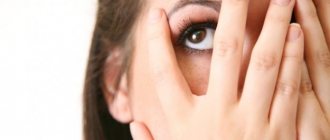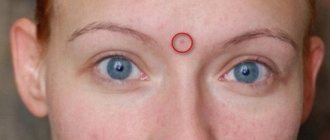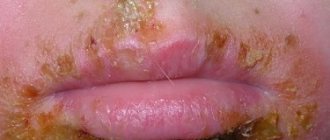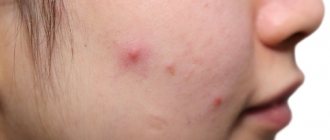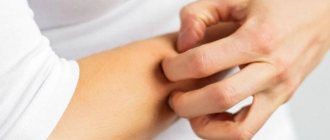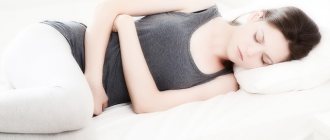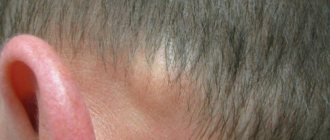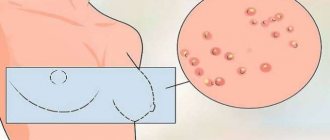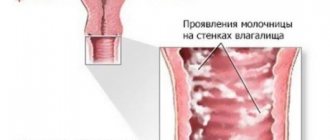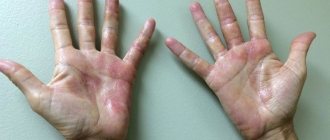Problematic skin needs special care. When hygiene is not maintained, the risk of a painful rash on the face increases. In addition to their unpleasant appearance, the growths cause severe physical discomfort.
With the accumulation of purulent contents in the lower layers, painful acne forms on the face. Eliminating them is quite difficult, since you need to identify the root cause of their appearance. A specialist can determine why the tumors have formed and prescribe appropriate treatment.
Causes
Painful rashes can form for both external and internal reasons:
- Incorrectly selected cosmetics or care. If you don't wash off your makeup well, in 99% of cases it will cause painful acne.
- Accelerated growth of hair follicles.
- Hormonal disbalance. Usually in adolescents of any gender or in women during menstruation or menopause. Also due to stress.
- The presence of a large number of bacteria.
- Subcutaneous mite (demodex).
- Increased sebum secretion. During the day, dirt, dust gets into open pores and mixes with sebum.
- Diseases of internal organs. Most often it is associated with the gastrointestinal tract.
Prevention
Acne is usually caused by excess oil in the skin and is not a direct cause of poor hygiene.
However, keeping your skin and hair clean can reduce outbreaks and prevent the development of all types of acne.
- Regular washing. Use a gentle cleanser to keep pores open, prevent dead skin cells from forming, and prevent bacteria from growing.
- Wash your hair regularly. Regular washing is especially important if your hair is naturally oily. Keeping your hair away from your face can help reduce the frequency and severity of acne.
- Don't touch your face. Frequent touching may introduce dirt or oil and cause a fire.
- Choose your products carefully. Always read labels on cosmetics and facial products, choosing gentle, oil-free brands. They are sometimes called non-comedogenic.
Risk factors
Before starting treatment, it is necessary to determine what could provoke painful inflammation:
- poor nutrition;
- allergic reactions;
- presence of bad habits;
- exposure to cold (frost, wind, draft);
- frequent consumption of fatty, fried, spicy foods, sweets, dairy products;
- heredity;
- side effects of certain medications;
- changes in hormonal levels;
- weakening of the immune system.
What diseases are warned about?
Rashes can appear on different parts of the body. A certain area of skin with painful pimples signals a disease.
On the back
Painful rashes on this area of the skin warn of problems with hormones. In women, they may occur in connection with menstruation. In men, acne on the back appears due to changes in the body or long-term use of steroids.
Other diseases associated with back inflammation:
- gastrointestinal disorders;
- problems with the genitourinary system;
- diseases of the spine.
On the face
Depending on the part of the face covered with acne, the disease can be determined:
- Acne around the mouth and in the center of the chin indicates problems in the stomach or small intestine.
- Rashes on the sides of the chin indicate diseases of the genitourinary system or hormonal imbalance.
- Pimples between the eyebrows indicate liver problems.
- Ears with inflammation are explained by impaired kidney function.
- Inflammations on the cheeks warn of a problem with the lungs.
On the head
Pimples located along the hairline indicate bladder disease.
Rashes on the scalp in most cases indicate a bacterial infection.
Hormonal imbalances, dermatitis, too thick hair (especially if it grows quickly) are also the cause of painful acne on the head.
On the forehead
On the upper part of the forehead - a problem with the bladder or colon. Toxins do not have time to be eliminated and poison the body.
The lower part of the forehead shows disturbances in sleep and the functioning of the nervous system.
On the nose
Pimples on the nose indicate diseases of the cardiovascular system.
On the butt
Causes of acne on the butt:
- passive lifestyle;
- hormonal imbalances;
- hypothermia of the body;
- allergic reactions.
Procedures
An alternative to cleansing can be peeling, which also has many varieties. If a pimple breaks out, it is best to avoid any of them until this stage passes. Otherwise, peeling perfectly helps to cope with inflammation.
Various treatments can help get rid of acne
The essence of the procedure is that the upper stratum corneum of the skin is removed, as a result the pores are cleaned, fat does not accumulate in them, and what is present is washed out.
There are preparations for home use, but cosmetology also offers chemical, laser peels and many others.
Symptoms
Regardless of the cause of inflamed acne, the symptoms will be the same:
- painful sensations;
- redness, inflammation;
- tubercles and compactions;
- after 1-2 weeks, white pus appears and the pain decreases.
Pimples on the head are accompanied by itching and irritation.
Find out how to get rid of acne scars fast. How to get rid of black pimples on nose? The answer is here.
Why does a pimple hurt?
I have already talked about the mechanism of acne in detail in another article.
In short, this is the result of blockage of the sebaceous ducts. But not all rashes become painful. Some of them, for example, millet, may not be disturbed for months. If left untreated, even they can later become a source of problems, but at the initial stage they do not cause any significant inconvenience. Painful sensations appear in the following cases:
- there is an active inflammatory process - it is accompanied by redness, swelling of the tissues, the rash can be very itchy;
- the sebaceous ducts are filled with pus - this happens when pathogenic microbes multiply inside the pimple, which the body is trying to fight;
- in case of mechanical damage to the skin - we are talking about basic combing, piercing or squeezing out pimples.
The most unpleasant and complex of these are deep, pus-filled, internal pimples. I have already written about the reasons for their formation and ways to combat them in another article. The rest are much easier to deal with, including using traditional methods. But it will be possible to cope with the problem once and for all only when its main source is identified and eliminated. And it can be internal or external.
Structure of the boil
What does an inflamed, painful pimple consist of:
- Dirt, dust gets into the wound or open pore and mixes with sebum.
- An internal abscess forms under the skin.
- With the active proliferation of bacteria, inflammation increases.
- This happens in order to protect the body from the penetration of these microorganisms inside.
- The pimple matures completely in 2-3 weeks, it is ready for opening.
Varieties
In general, acne can be divided into two types:
- Non-inflammatory. This group includes comedones, that is, sebaceous plugs. They close the skin pores, preventing them from breathing. There are open and closed comedones. The former are better known as “blackheads”, since they look like ordinary blackheads. And the closed ones are nodules with white heads. It is worth noting that only open comedones are allowed to apply pressure, although most people do the opposite.
- Inflammatory. They themselves are divided into subspecies:
- papules - clogged, infected pores, which are small, dense nodules (no more than 5 mm in diameter);
- pustules are small ulcers, less dense, since their cavity consists entirely of pus; in the center, as a rule, there is a small hair;
- nodes are the most serious forms of pustules, which differ in both density and larger sizes;
- cysts - are inflammations under the skin of a red or blue-purple color, they can be extremely painful, and can also leave noticeable scars on the surface of the skin; a squeezed pimple (cystic) can affect a person’s internal organs, so you should be extremely careful.
How to get rid
To effectively eliminate painful acne, it is necessary to treat both externally and internally.
Drug treatment
There are many pharmaceutical products to combat internal acne:
- Vishnevsky ointment accelerates the maturation of the subcutaneous tissue several times. Adsorbents help quickly draw pus to the surface for subsequent removal. The ointment is applied at night and secured with a band-aid. In the best case, the pimple can be removed the next morning. More than three procedures will not be needed.
- Levomekol ointment disinfects the inflamed area and heals the wound. When applied to the rash several times a day, it goes away in 4-6 days.
- Gel Baziron AS is used for a course of 3 months. The product is applied 2 times a day, pointwise to each inflammation. After the course, acne should disappear completely.
- Dalacin - contains an antibiotic, you should first consult a doctor. Used in a course of 2 weeks. After this, an addiction effect sets in and the next course can be repeated after 6 months.
- Zinc ointment dries out inflammation well. It is applied 5-7 times a day. The effect is noticeable within a week.
Cosmetic procedures
In combination with home care, salon procedures will not be superfluous.
They act more deeply and eliminate the cause:
- Acid peels exfoliate dead epidermal cells and accelerate skin renewal. The process of maturation of painful acne will occur faster.
- Microdermabrasion removes dead skin cells from the surface of the skin, improves microcirculation in tissues, and accelerates blood circulation.
- Laser resurfacing removes not only acne, but also marks and scars. The procedure itself does not leave any traces.
- Ozone therapy destroys all bacterial microorganisms, relieves inflammation and swelling.
- Mesotherapy (subcutaneous injections) is useful because the active substances immediately reach the problem area.
Medical cosmetics
It can be purchased at pharmacies.
Each manufacturer has a line to combat acne:
- La Roche-Posay Effaclar.
- Uriage Hyseac.
- Avene Cleanance.
- Vichy Normaderm.
- Bioderma Sebium.
- Duckray Ceracnyl.
Traditional methods
From improvised means you can make an effective weapon against painful subcutaneous acne:
- Cut a piece of aloe and peel off one side. Place an aspirin tablet in the middle. Place the side of the tablet on the pimple and secure with a band-aid. Leave until morning. The pus will be drawn out and the pimple can be easily removed.
- Drop 2-3 drops of water onto the activated carbon tablet, you should get a creamy thick mass. Apply to the pimple, wash off after an hour. Coal draws out all impurities and toxins, relieves inflammation.
- Mix white clay with milk, apply the paste on the face in a thin layer and leave until completely dry. Clay will dry out acne, milk will soften the skin, preventing dryness.
- Before going to bed, apply a cotton swab with iodine to each pimple. Lubricate carefully to avoid burns.
Video: Folk remedies for facial rashes
Home Recipes
Natural remedies are great for fighting internal acne:
- Mix the juice of half a lemon, half a glass of mint decoction and 1 tsp. aloe juice Wipe your face with a refreshing toner twice a day.
- Soak a cotton swab in tea tree essential oil and apply it to the rash several times a day, each time after drying.
- Mix the infusion of St. John's wort and yarrow with chamomile oil. Cut a cotton pad into small pieces, soak each one generously in the tincture, apply a lotion to each inflammation for 30-40 minutes.
- Apply grape seed oil to damp skin after washing. It will seal the water and moisturize the skin. This is the only cosmetic oil suitable for oily skin.
Useful tips
Effective and effective ways to combat painful acne:
- Sunbathing under the sun. It is necessary to use sunscreen, otherwise it will have the opposite effect.
- Drink antioxidant drinks: green tea, pomegranate juice, citrus juices, ginger tea. Eliminate coffee and black tea.
- Go to the doctor and get tested for the presence of subcutaneous mites.
- Change pillowcases every day.
Preventive actions
To prevent the question of how to cure unpleasant skin rashes in the future, prevent their occurrence. This is especially true for people with oily skin. Such preventive measures include:
- spending time outdoors;
- proper nutrition (moderate consumption of sweets, spicy foods, avoidance of alcohol) with sufficient amounts of milk, fruits, fish, vegetables;
- eliminating trauma to the skin, thereby reducing the possibility of infection penetrating into the inner layers of the skin;
- treatment of chronic illnesses;
- prophylactic use of infusions of medicinal herbs.
All this will reduce the possibility of internal subcutaneous rashes and keep the skin beautiful and healthy.
Prevention
To prevent painful pimples from appearing, do not forget about the following precautions:
- improve your diet, get rid of unhealthy foods, eat more fiber;
- do not expose yourself to stress, get enough sleep;
- use cosmetics suitable for your skin type;
- wash off makeup, even if you really want to sleep - always have cotton pads and micellar water on your bedside table;
- regularly examine the entire body;
- study medicines and cosmetics for allergens;
- change bed linen at least once a week, pillowcases at least twice.
See reviews and reviews of products for acne and pimples. How to get rid of acne marks? Details in the article.
How to quickly get rid of acne scars? Read on.
When treating painful rashes, a comprehensive approach is important. Just eating right or using ointment is not enough.
Self-care should become a habit; there should be no breaks. You should not use aggressive products in daily care. And then painful acne will go away forever.
Seeking medical help to remove a subcutaneous pimple
Schedule a consultation with a dermatologist
This is more of a long-term strategy for treating acne, as it is unusual for a new patient to get an appointment with a dermatologist on short notice; however, establishing a relationship with your doctor now may make it easier for you to get acne emergencies in the future. Consider an article on how to remove acne spots with makeup.
- After you describe the types of acne you have, your doctor will examine your skin, give you skin care recommendations and tips, and may also offer you prescriptions for cleansers, daily treatments, and spot treatments that are specifically targeted to treat the problems you are suffering from.
Give a cortisone injection
The fastest way to shrink a pimple is to see your dermatologist for a steroid injection at the site of the pimple. These injections can quickly reduce most acne, but they are expensive and typically cost over $100. They also should not be used frequently. However, for special occasions such as a wedding or prom, a cortisone injection may be the solution you need.
- Steroid injections for acne should always be considered as a last resort option. Repeated steroid injections can thin the skin and leave a scar.
